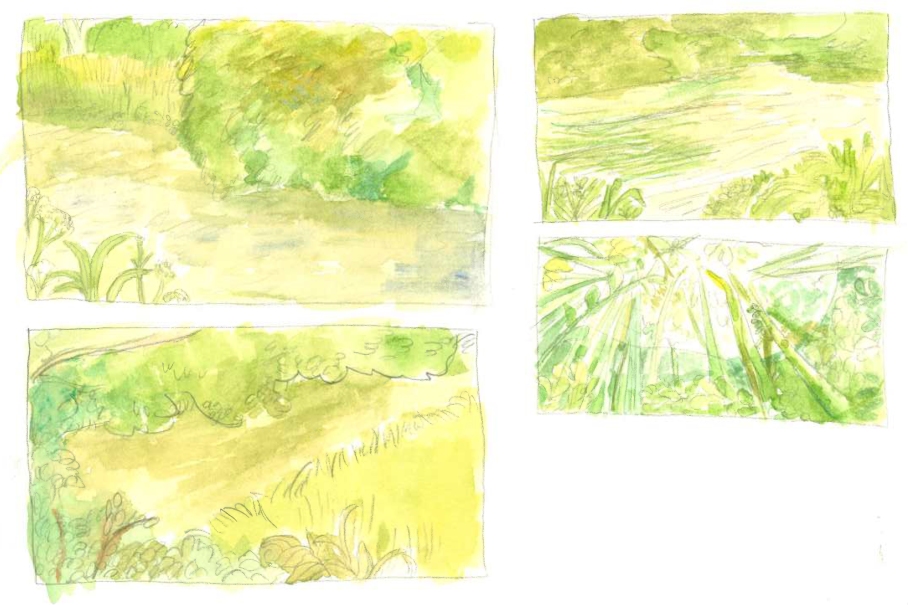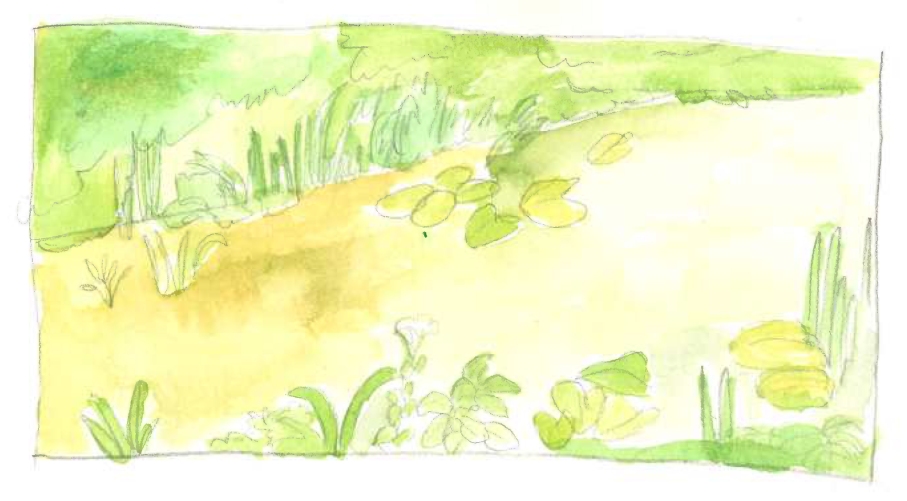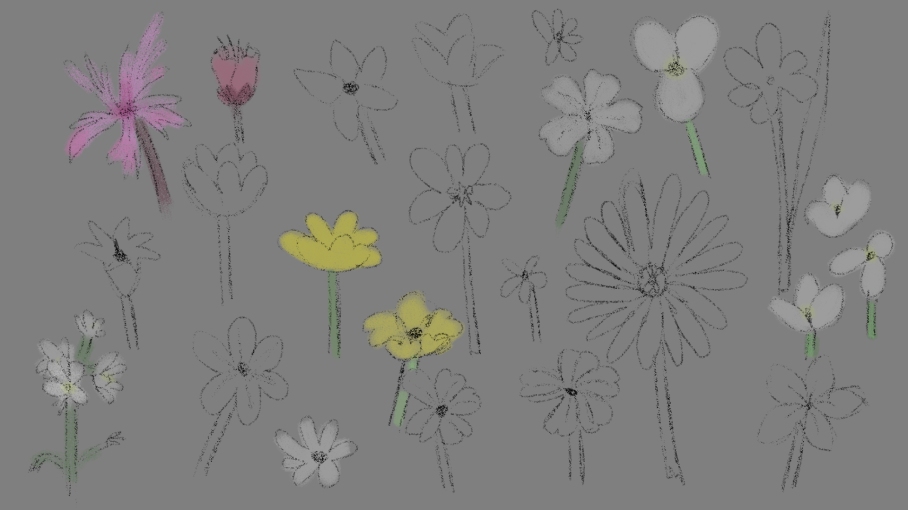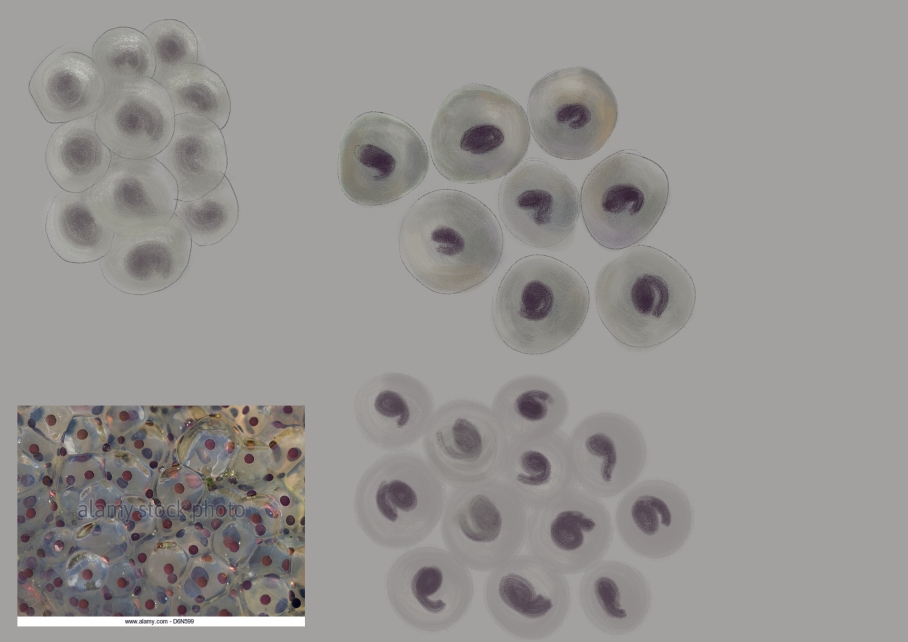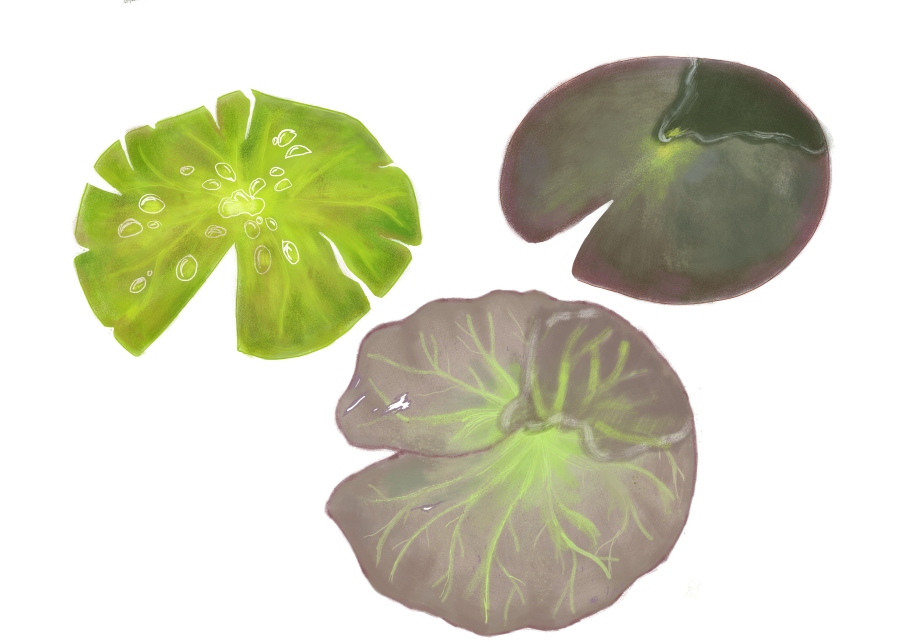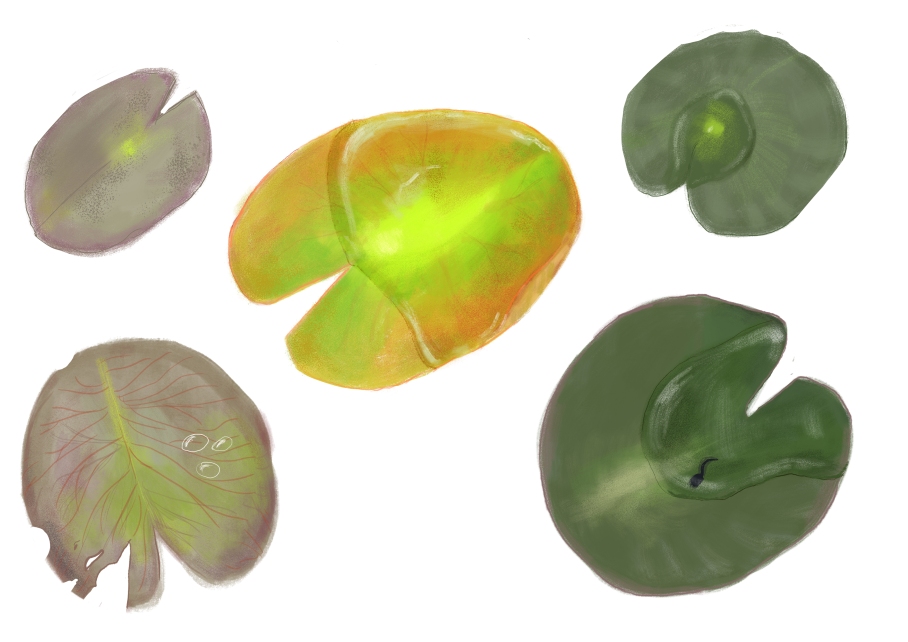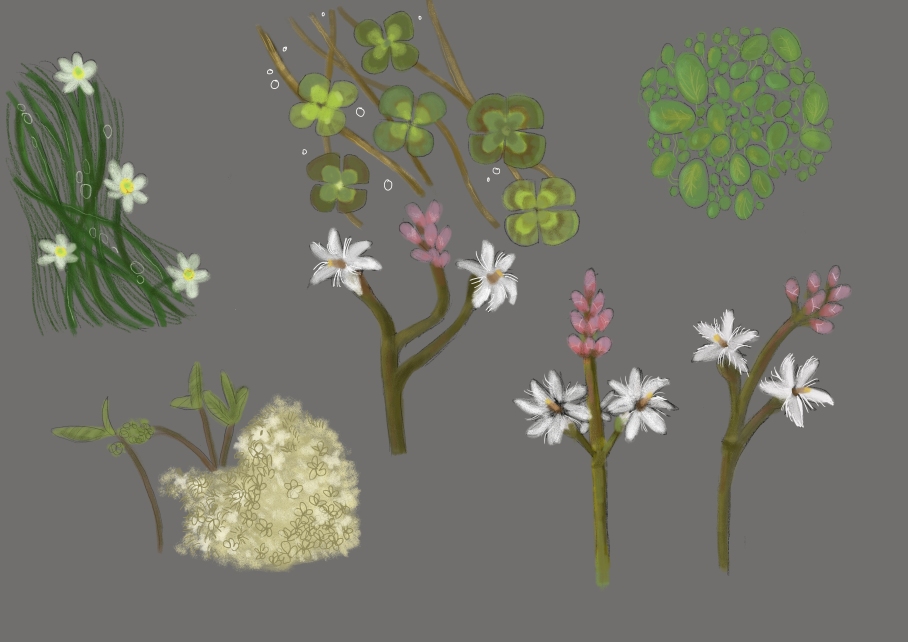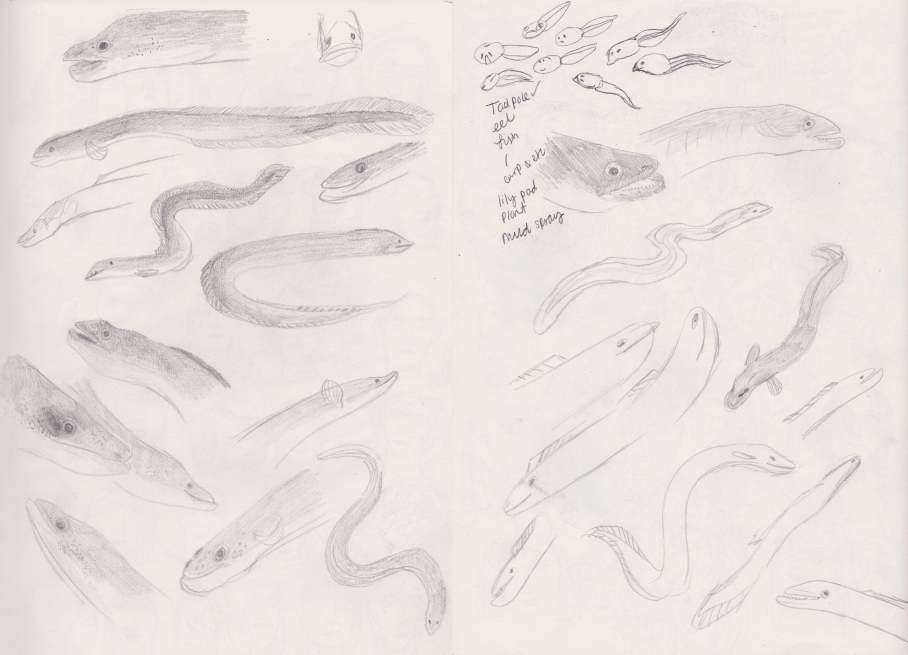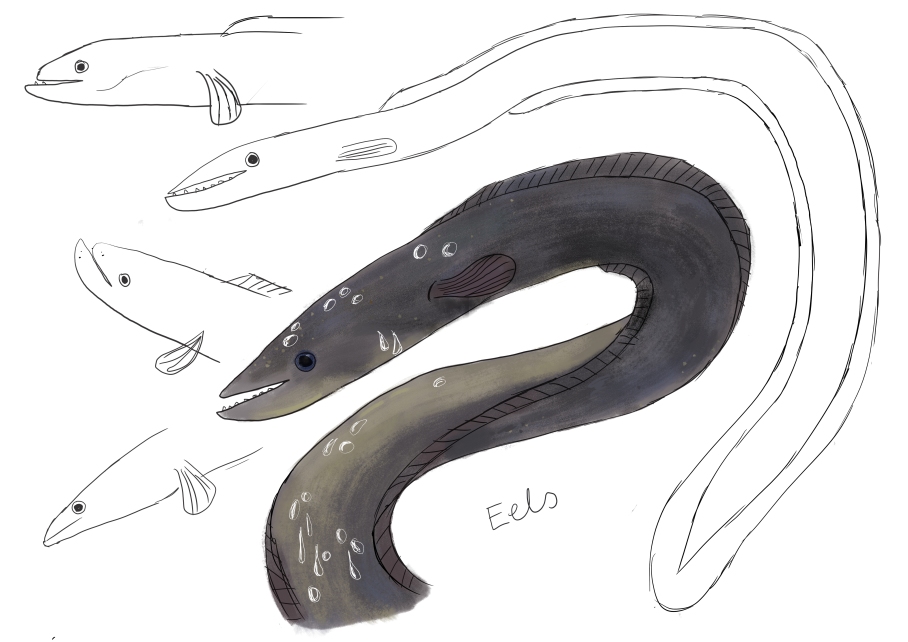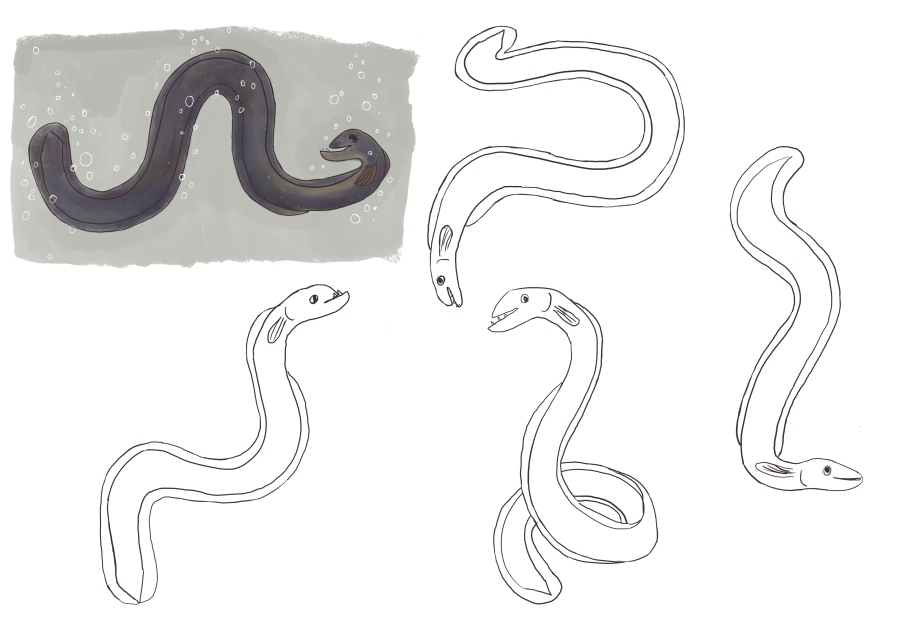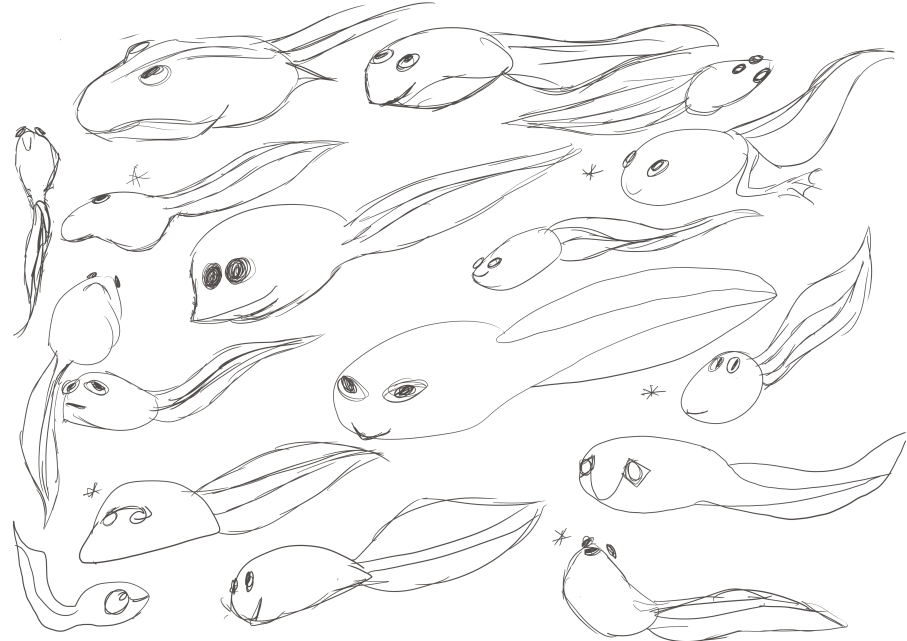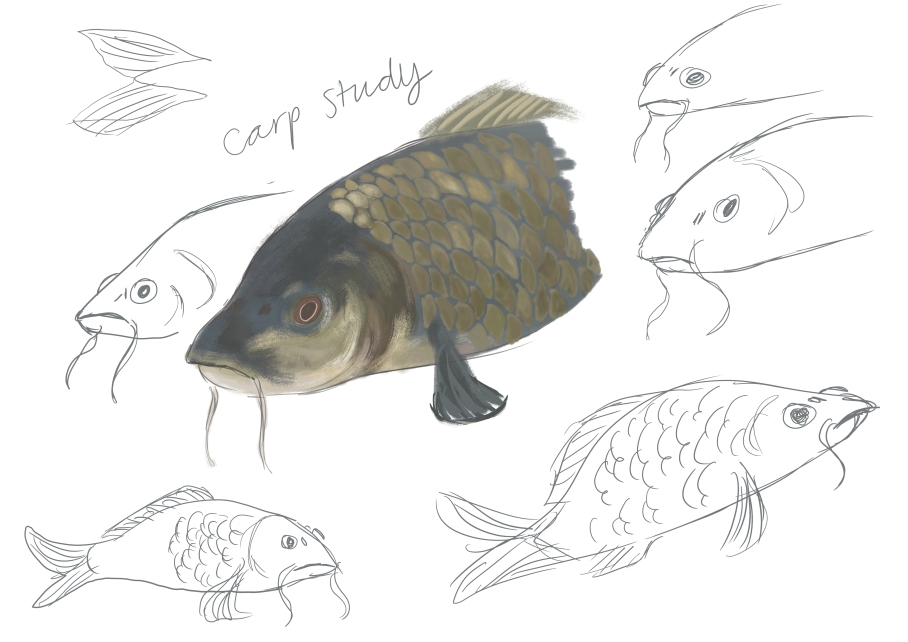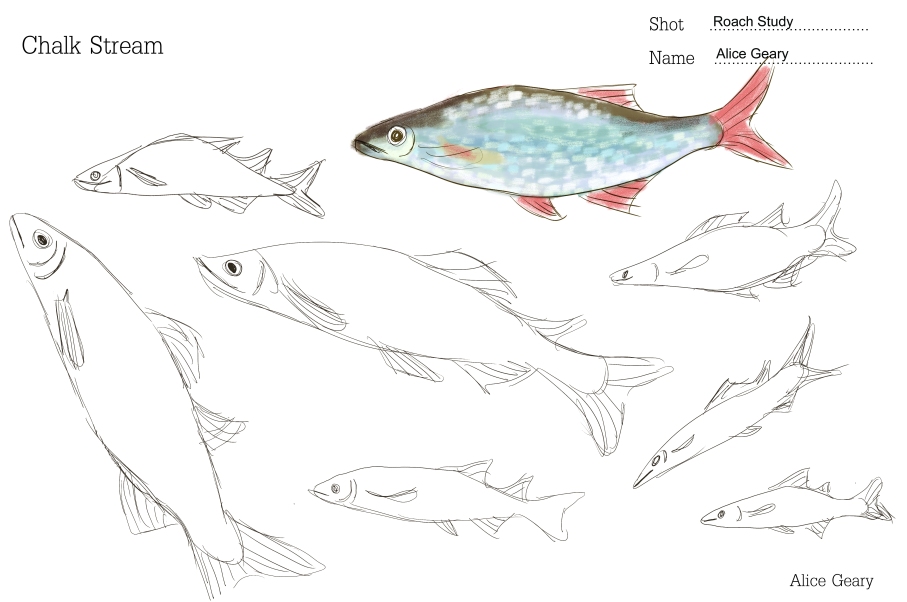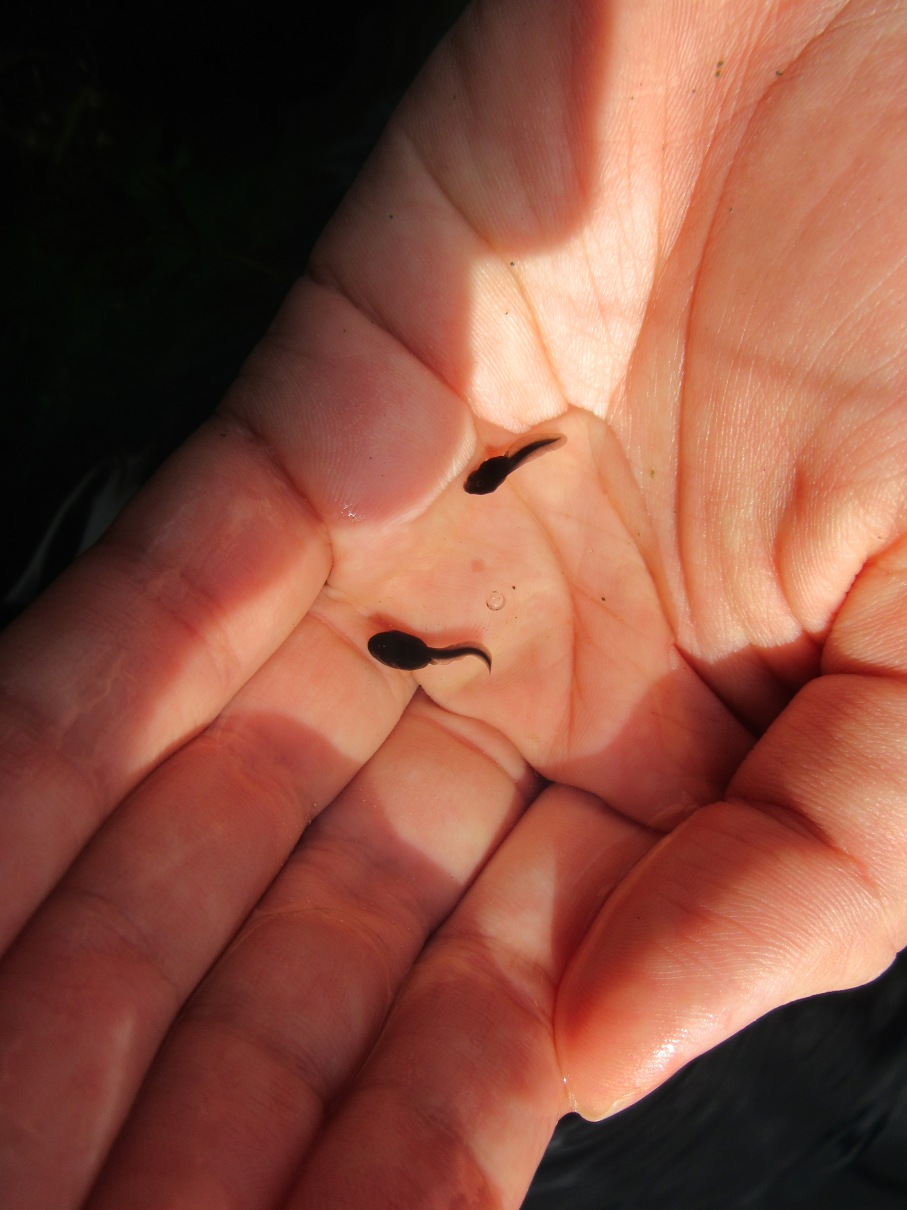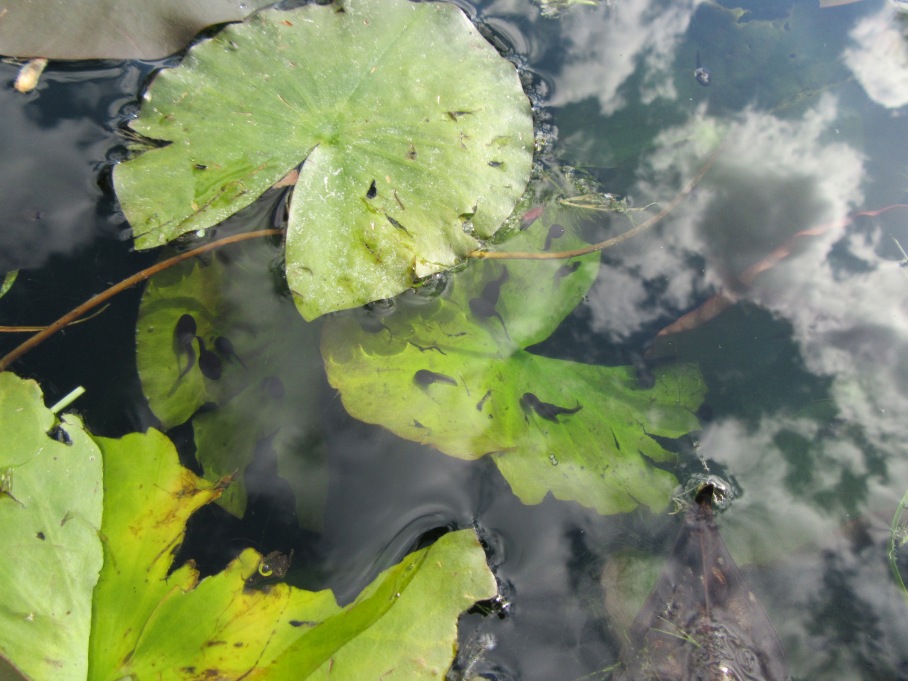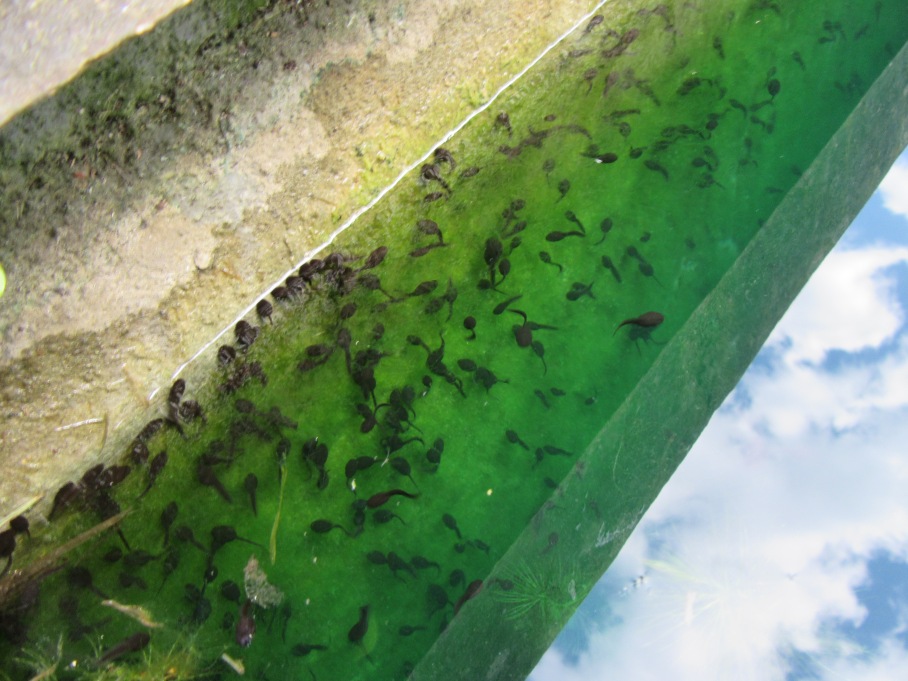
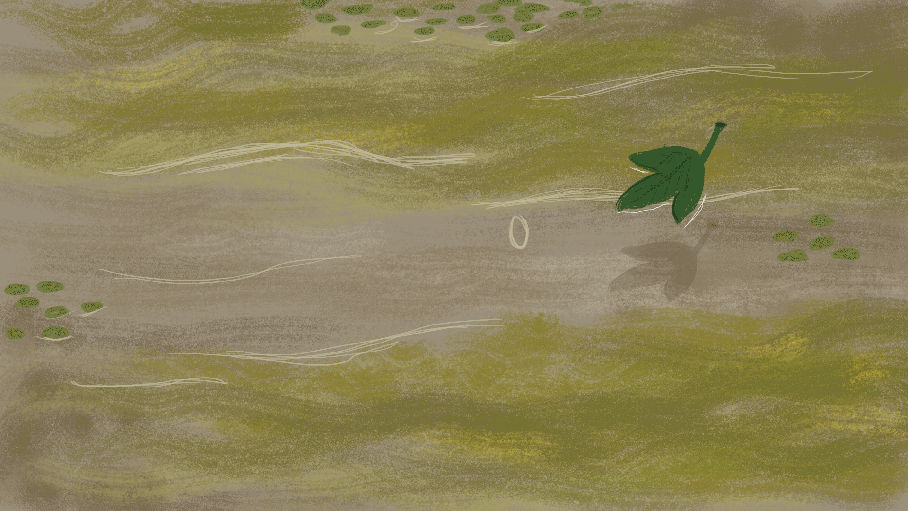
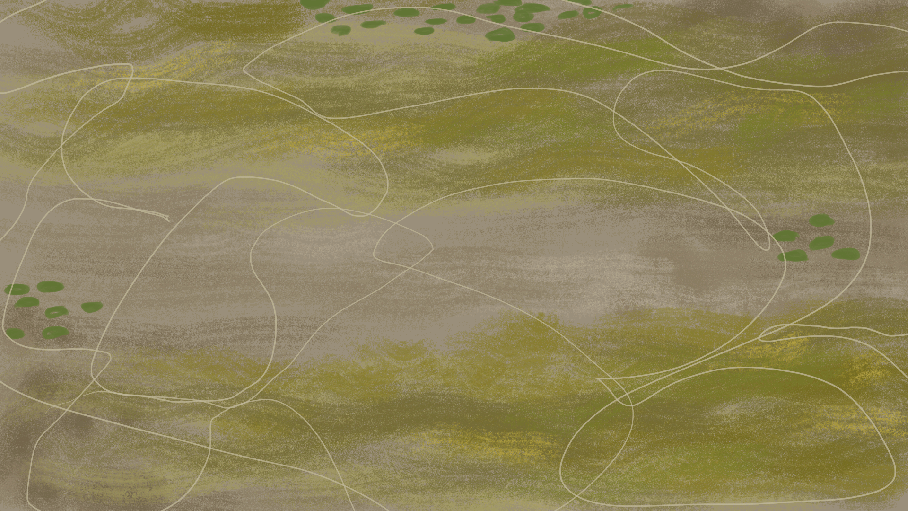
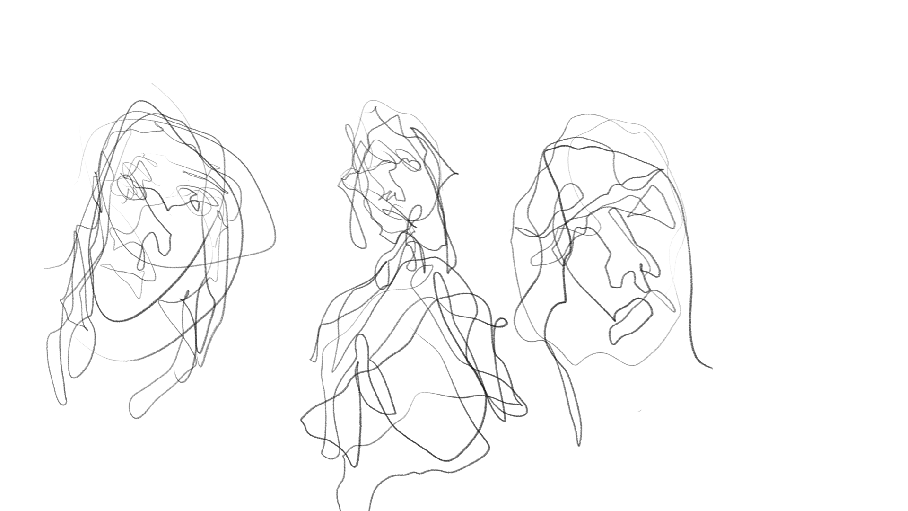
Test reflections in water
(LO2:)I created this quick animation test to explore how I could create that distorted reflection feel. Based on the painting below I wanted to create a free flowing and messy moving animation. I used my left hand to draw my character – I actually like the result and feel it’s a nice start to think about how I could create the reflections. I hope to continue explore different ways.
(LO1:) On this post I want to explore the different ways that water could be animated as well as how I am going to tackle this little obstacle.

Sail Boats in Water – Egon Schiele (source)
(LO1:) Above is a painting by Egon Schiele that I currently have on my wall – I really love the mood and the colours of this piece , but what I like in particular are the reflections of the boat in the water. These ‘wobbly’ lines give the illusion of movement and distortion of the reflection of the boats on the surface of the water. You can just imagine how it would move if it was animation. I like how this painting has so much character and texture. It’s a nice idea to abstract water, which I hope I can experiment with.
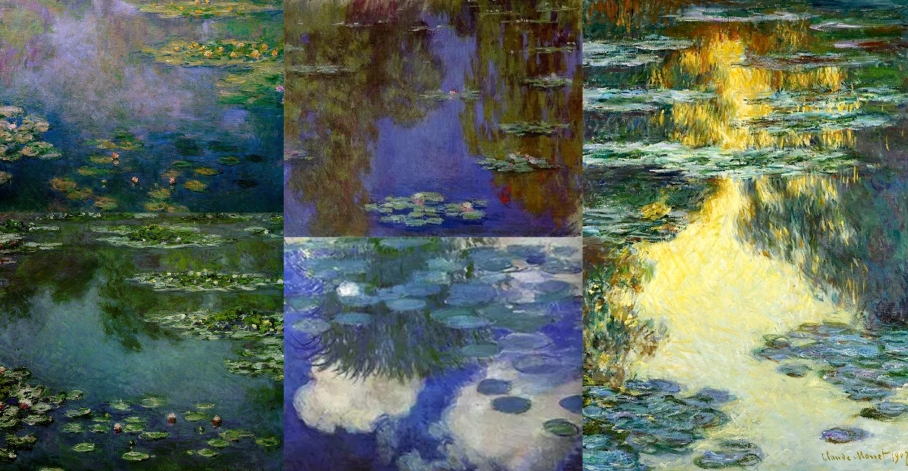
Claude Monet (1840-1926) Waterlilies
(LO1:) Claude Monet is an expert at capturing water scenes like the famous Water Lily paintings above. There are a large variety to choose from but the paintings above are some of my favourites. I like how his paintings has such stillness, and the reflections of the sky play a large part in giving the picture a certain mood or feeling. The blue sky for instance (bottom middle) gives us that summer day feeling, bright and sunny whereas the picture on the far right – a sunset or sunrise has this fire like energy which is more romantic and gives us another feeling looking at it. The water is coloured by the different skies. This is another way i could approach my chalk stream – the sky reflecting on the water.

La Grenouillere – Claude Monet, 1869 (source)
(LO1:) I also stumbled on this other painting by Claude Monet depicting a river. I really like how the water has been captured in this painting, I get the sense of clear moving water. The dark tones give another atmosphere of coldness of being in the shade. Paintings of water like this is calming and we imagine it alive. The way in which Monet paints is in an impressionist style, I like his thick brush stokes (such as the trees and water), the different colour and shade create this ‘mini waves’ of water.
(LO1:) I really like this piece of concept art from the making of Disney’s Pinocchio. I love the long narrow image and the composition with Pinocchio at the bottom. We feel like we are falling down into the depths of the sea. I like the gradient scale, from lighter green to the dark green at the bottom with less sun light. It could be a nice idea for my own animation to in cooperate the surface light and the change of the bottom of the stream.
(LO1:) I like the movement on this water in this concept art. The ripples on the surface on the water and the stringy water on the rock. It’s interesting and useful to learn more about how to make the water feel so lively.
Ponyo (Water effects)

(LO1:) I watched the Studio Ghibli film, Ponyo (2008) as secondary research to observe how they animate their water. As this film is set next to the ocean and water is apart of most of the scenes. I really like this opening and ending of the film. The water is created with these fluid shapes and lines. It doesn’t have to be realistic but still have character and be believable.

Ponyo (2008)
(LO1:) The shot above is a perfect example of how water can be achieved. This water is so clear (like chalk streams), the way they have created this water is with four elements: white reflections on the top of the water surface, black ripple lines, water splash and wobbly lines for the distortion. I like how the legs and arms wobble, these small details make the water look more realistic and have depth.

(LO1:) More wobbly-lined reflections as she steps into the water she disturbs the reflection and the ripples create a wobbly of them (top image). Shadows are scattered at the bottom of the water, creating the depth we see in the bottom picture. I like how the shark and Ponyo are semi-submerged and they are two separate colours.
(LO1:) I really love how juicy Ghibli creates there water. It is so realistic in it’s movement but the water always feels so full and juicy, filled with life they create this like above creating this 3-D ripple gives volume to the water and the shines.
The water in Ponyo (2008), can look very realistic, like in the GIFS above, but it also had a lot of creative and wild water. The water such as above, is shapely and free flowing. It has a lot of character and fluid movement that is completely unrealistic. At times the sea has turned into giant water fish, had eyes and moved like string. It’s nice to see how I could also be creative, being free to think what is the most effective way to show the water.
More water in animation
(LO1:) In this shot of Quest for Camelot (1998) the lead character’s age change through every ripple of the water. This happens as the image is distorted. It’s a clever use of the water and shows how the ripple disrupts a reflection.
(LO1:) I like this scene in the Little Mermaid II (2000) where Melody swims over the still water and we have this wonderful reflection of the cloudy day which is only disrupted by her own arms swimming. The ripples distort but do not ruin the sky.
(LO1:) Sometimes animating water doesn’t need to be complex, just a simple ripple can give that illusion of water. In the above shot a gradient watercolour illustrates the surface of the water – still water doesn’t need to have too much animation and the ripple brings life to the scene. Two colours are used to create the ripple, white (light) and a dark grey (shadow) – it’s animated smoothly across the scene, simple but effective.
(LO1:) The water in this scene is more lively and has more movement. The ripples are in white and move with the tide back and forth. The water is also clear so we can see the man in the water, he is just tinted a darker colour. I want to understand exactly the way they create these shots – even if this is too difficult for me to create, learning about the process has helped to understand this.
(LO1:) This water is satisfyingly clear. As I am also trying to create clear waters, I thought that I must include this GIF above. The water is so clear that we see every detail of the objects below. The leaf is a good way of creating that idea of a flowing stream. And the small lines and splash at the bottom of the water fall also add to this illusion. Everything else in the scene is still apart from the water which brings the picture to life!














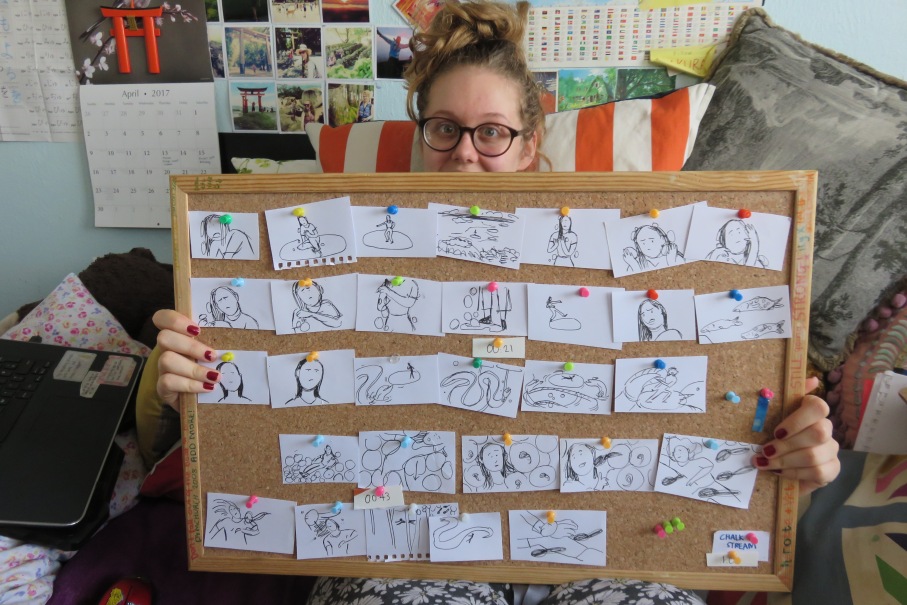
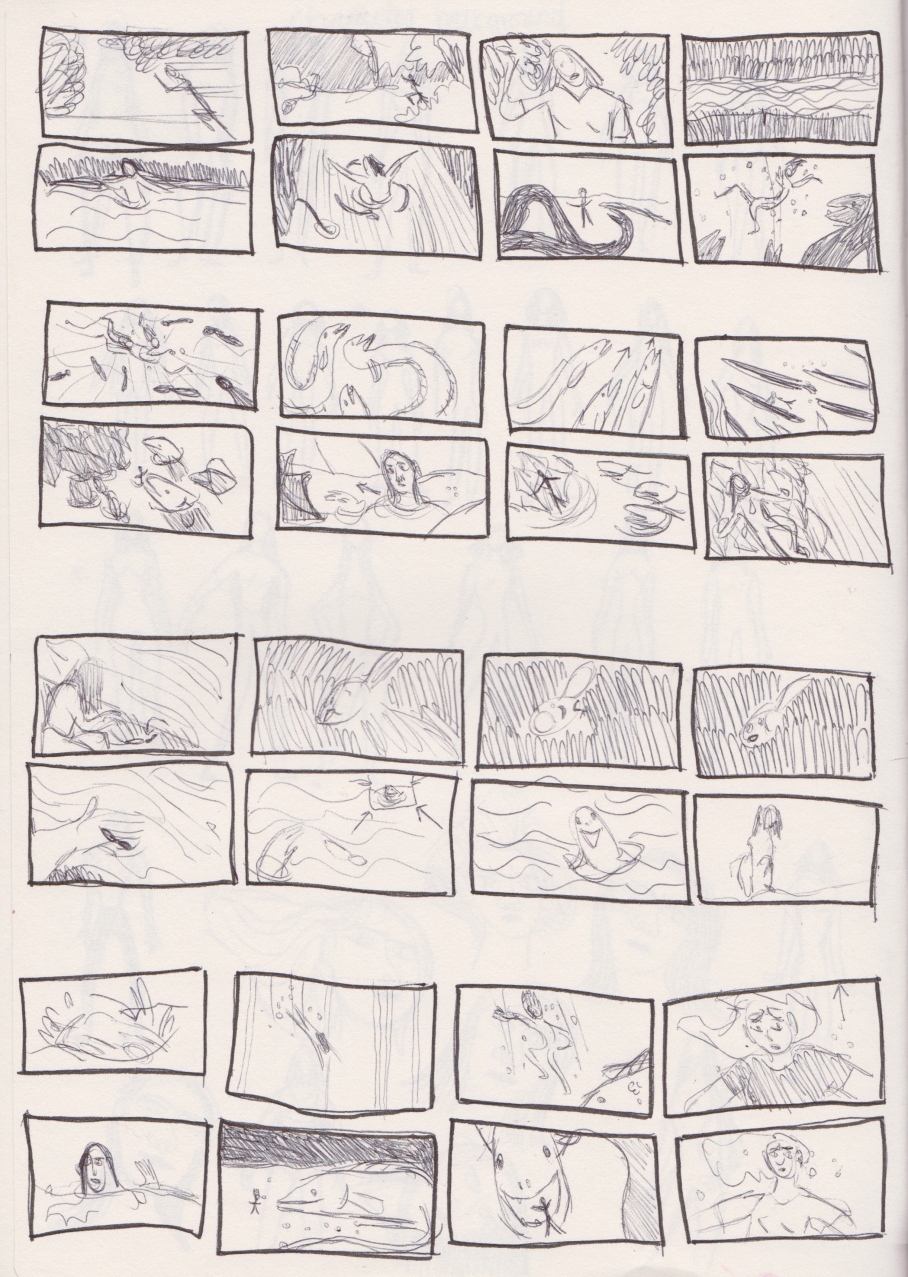
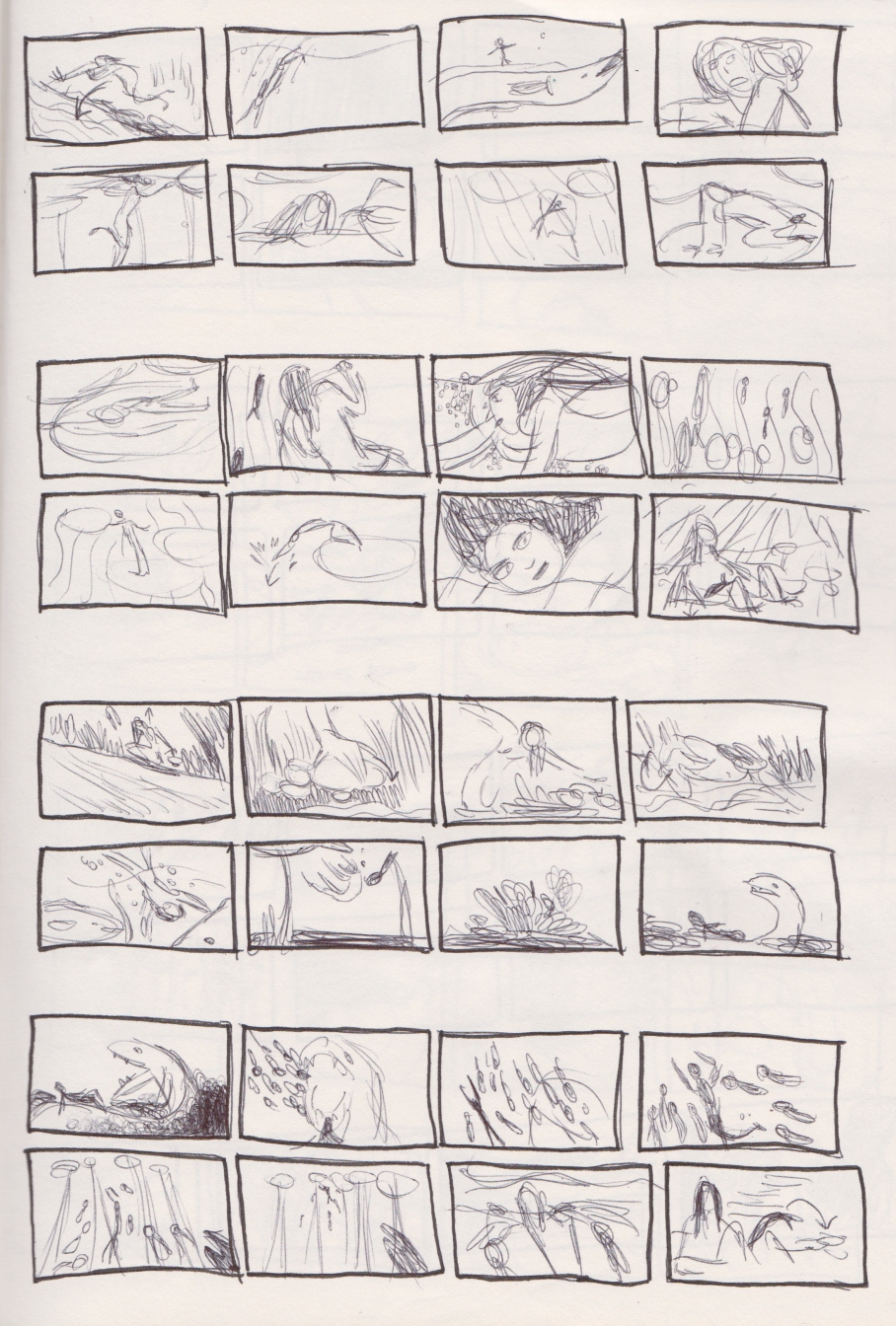
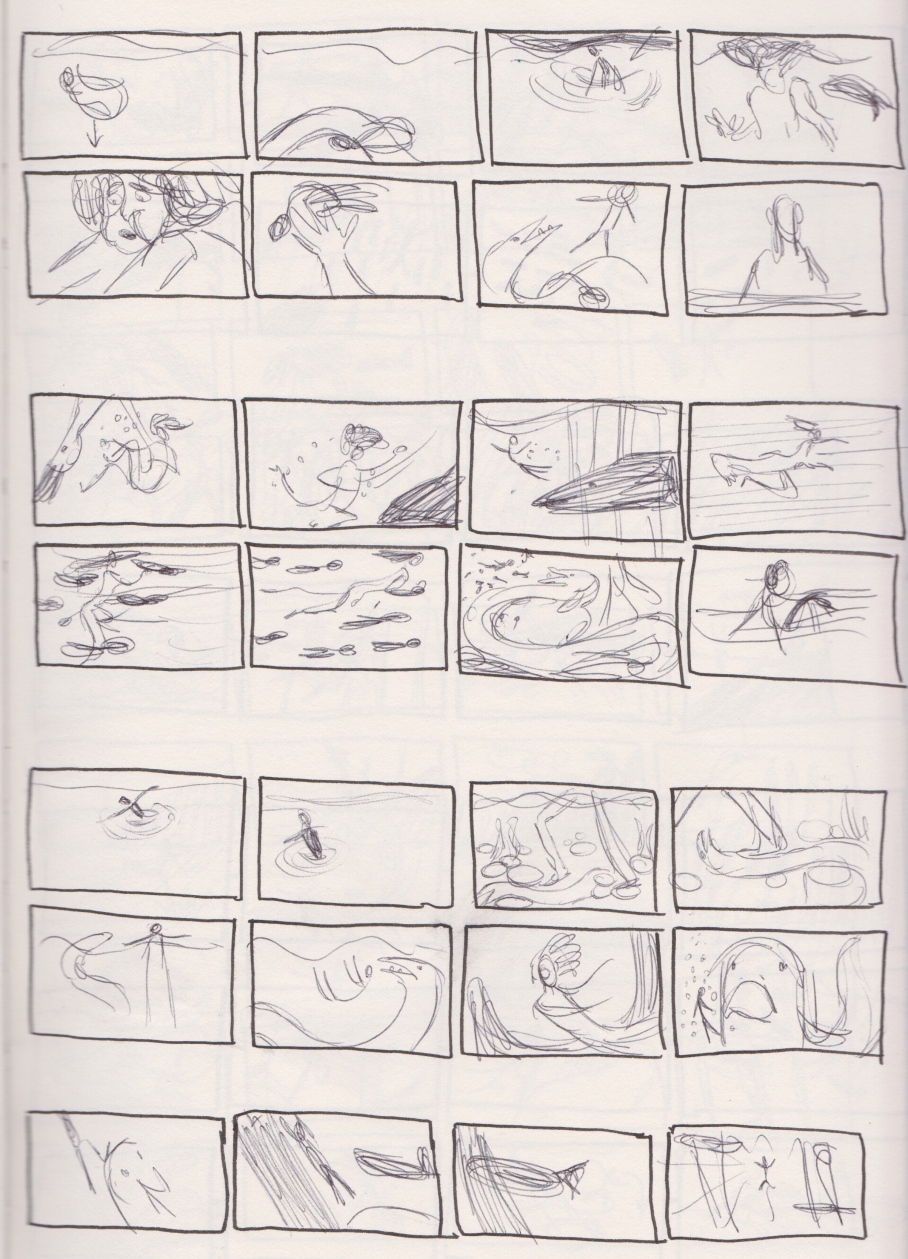

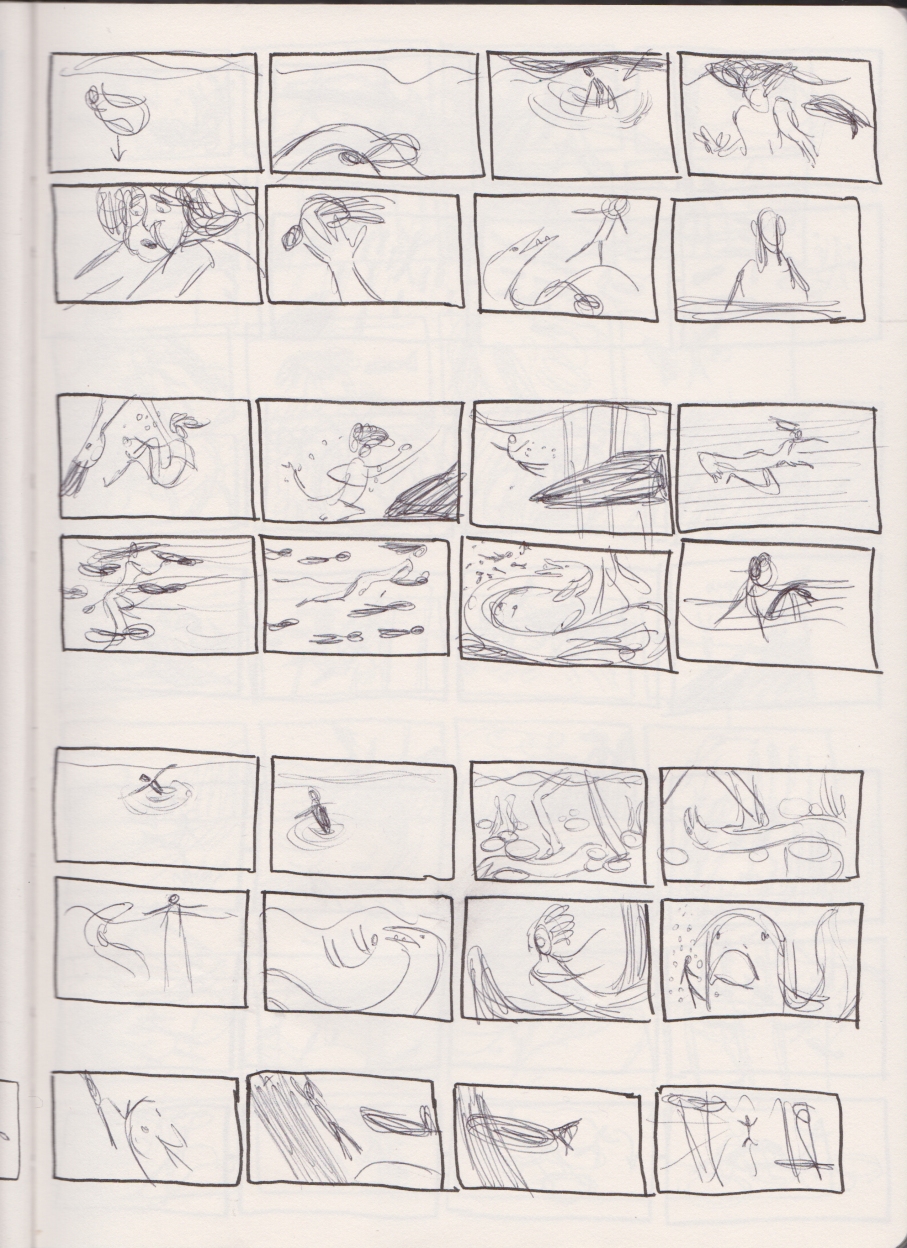
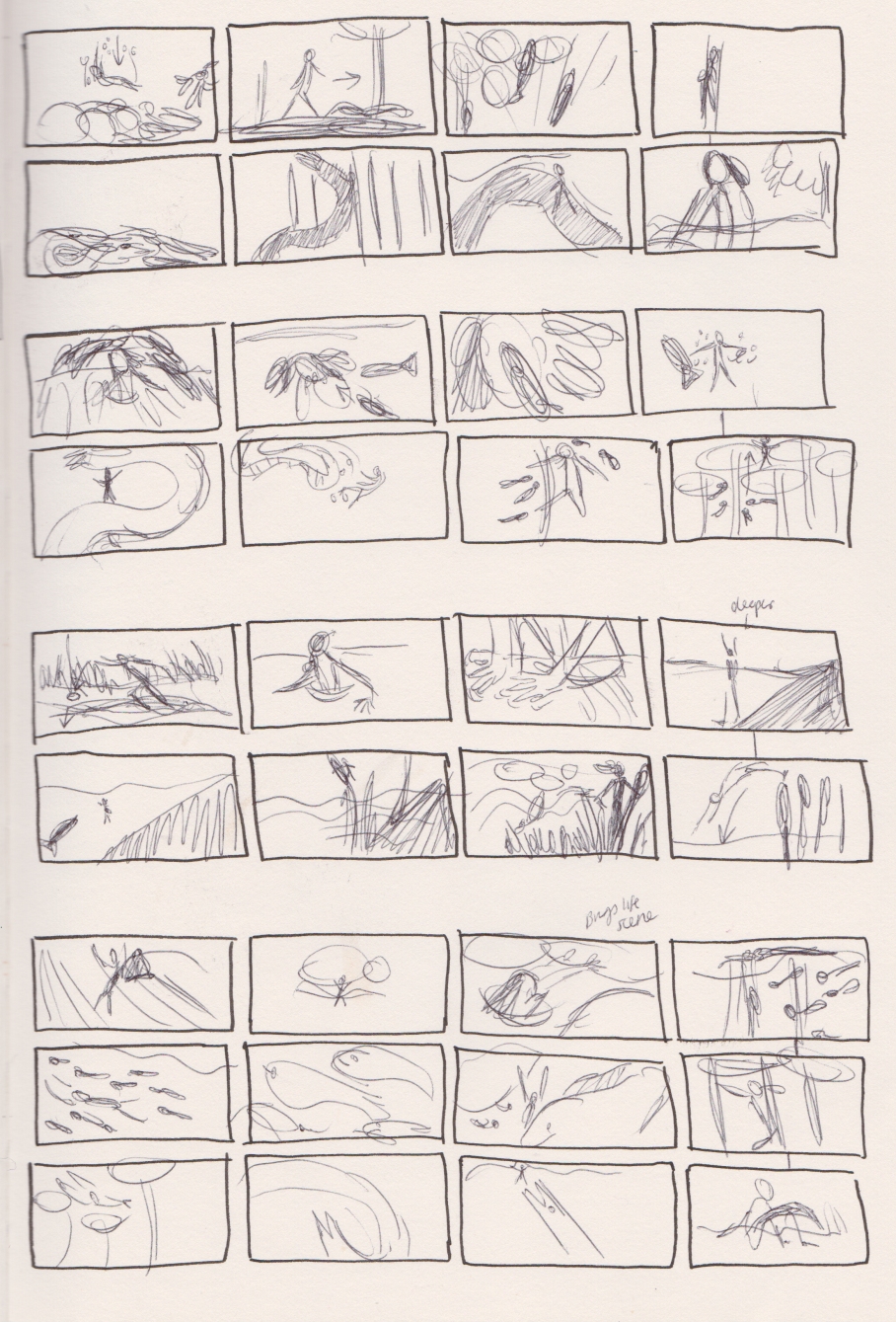
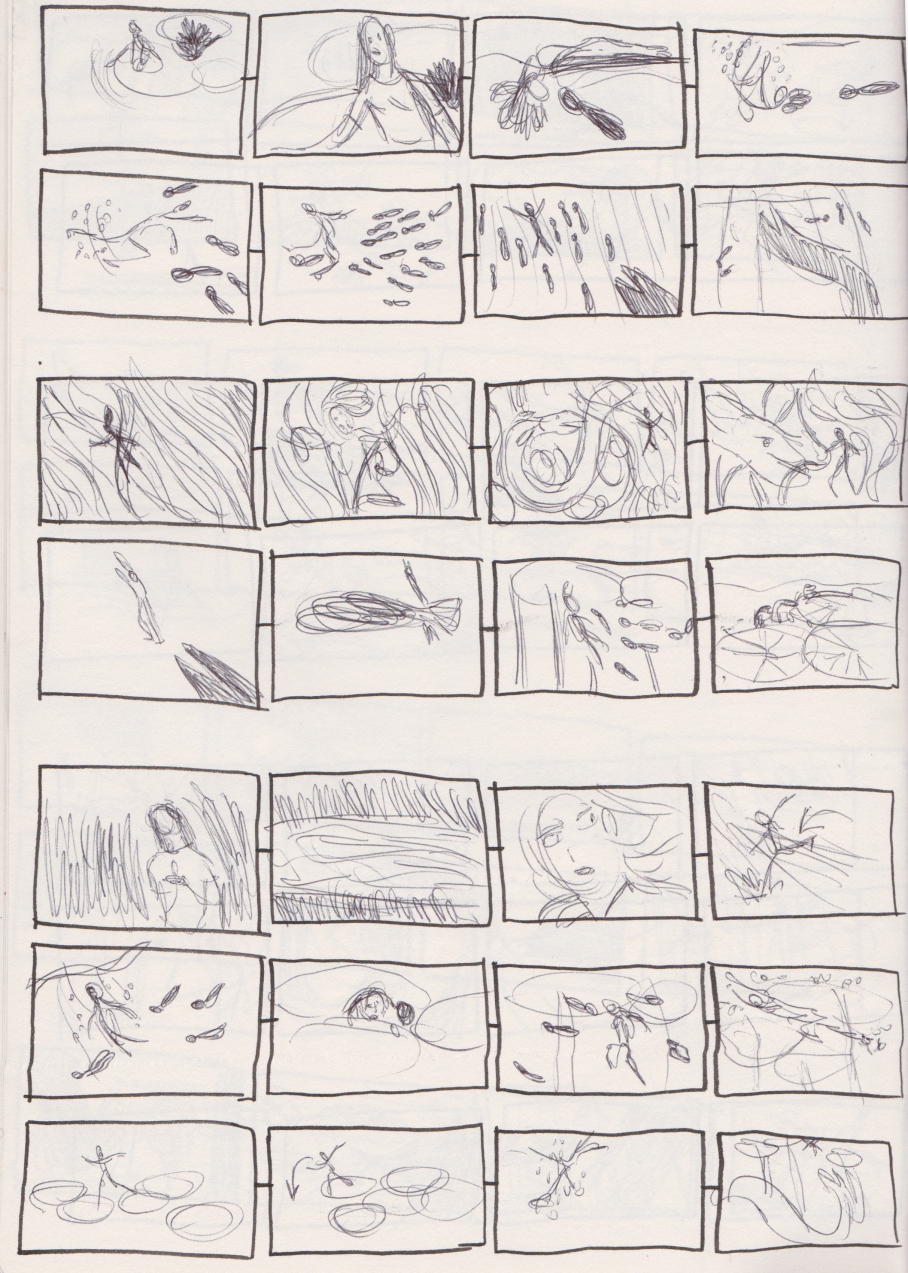
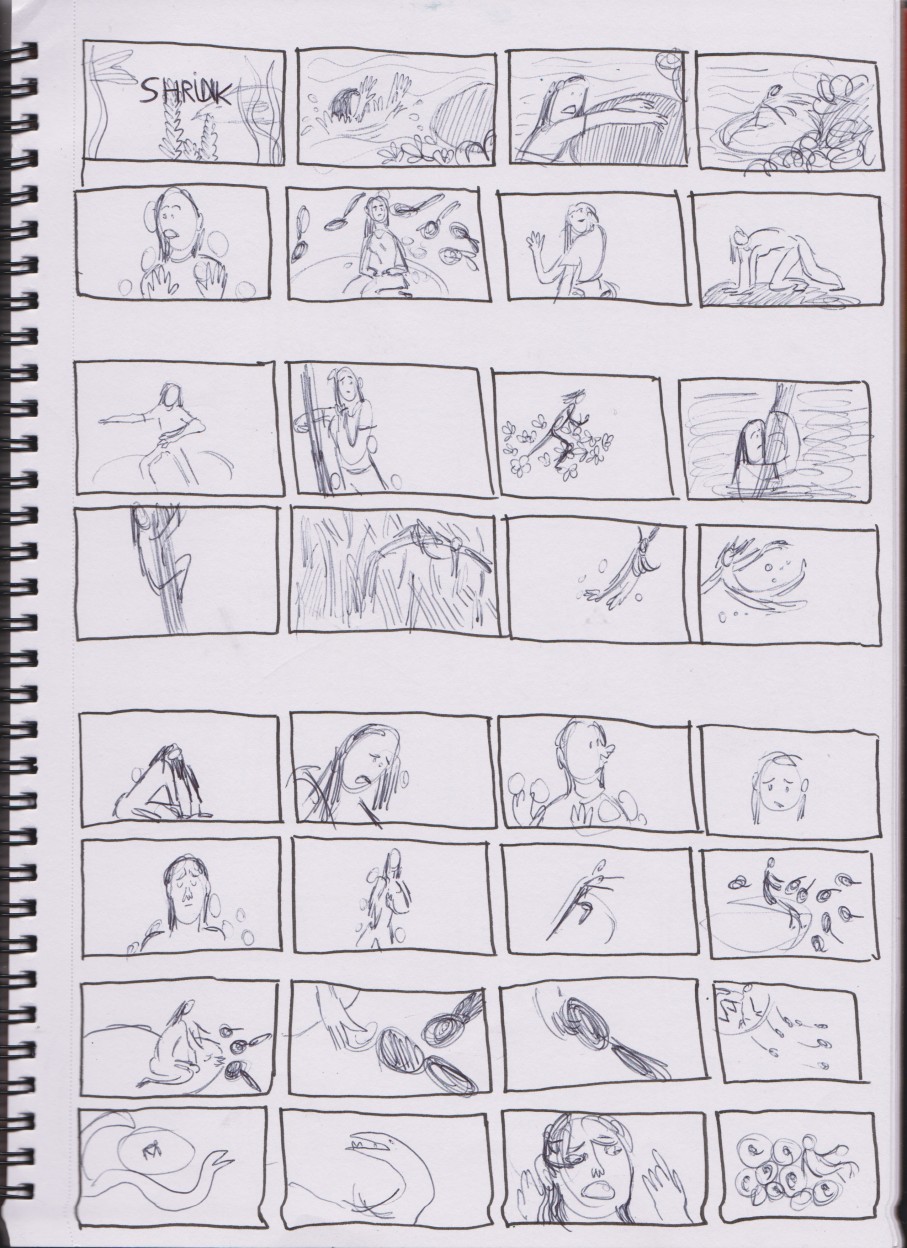

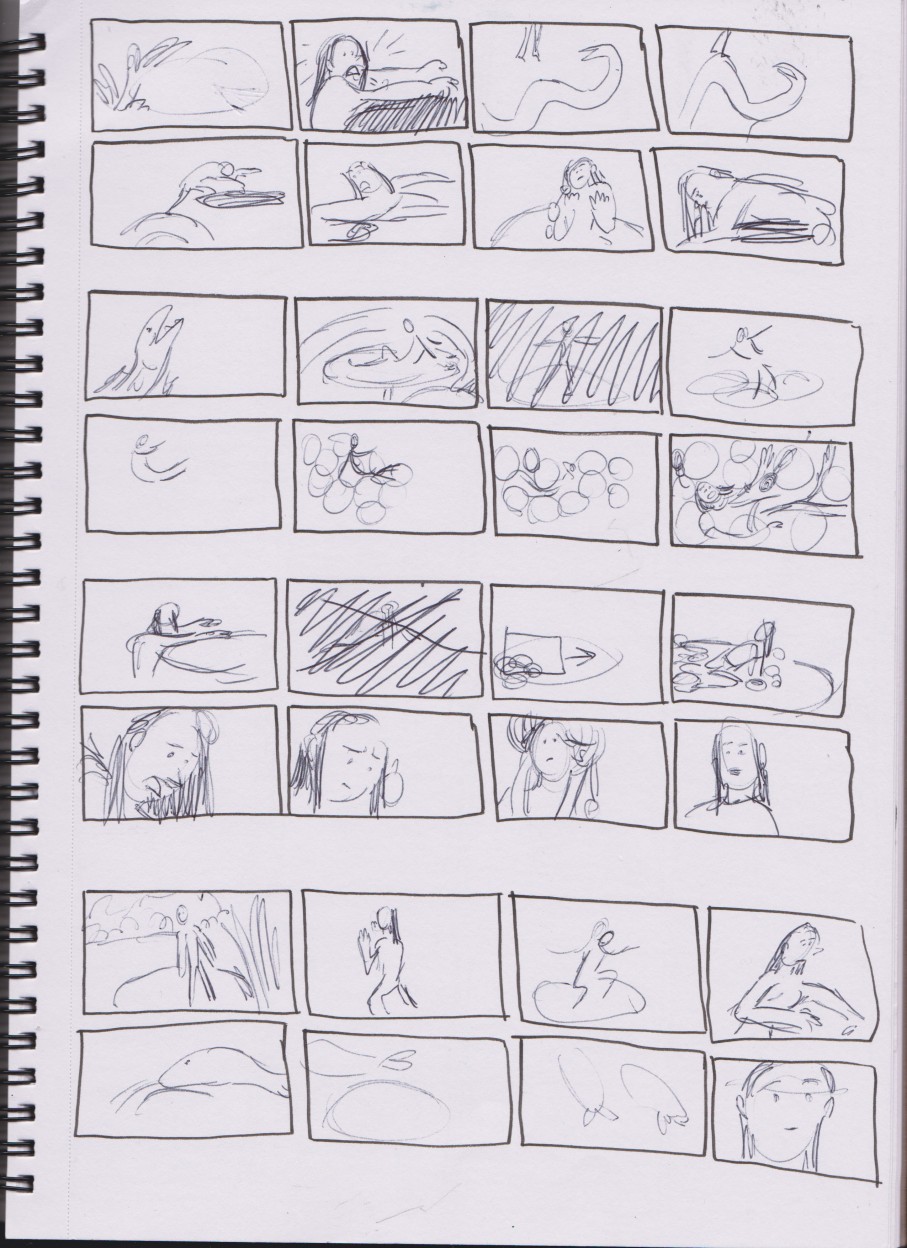



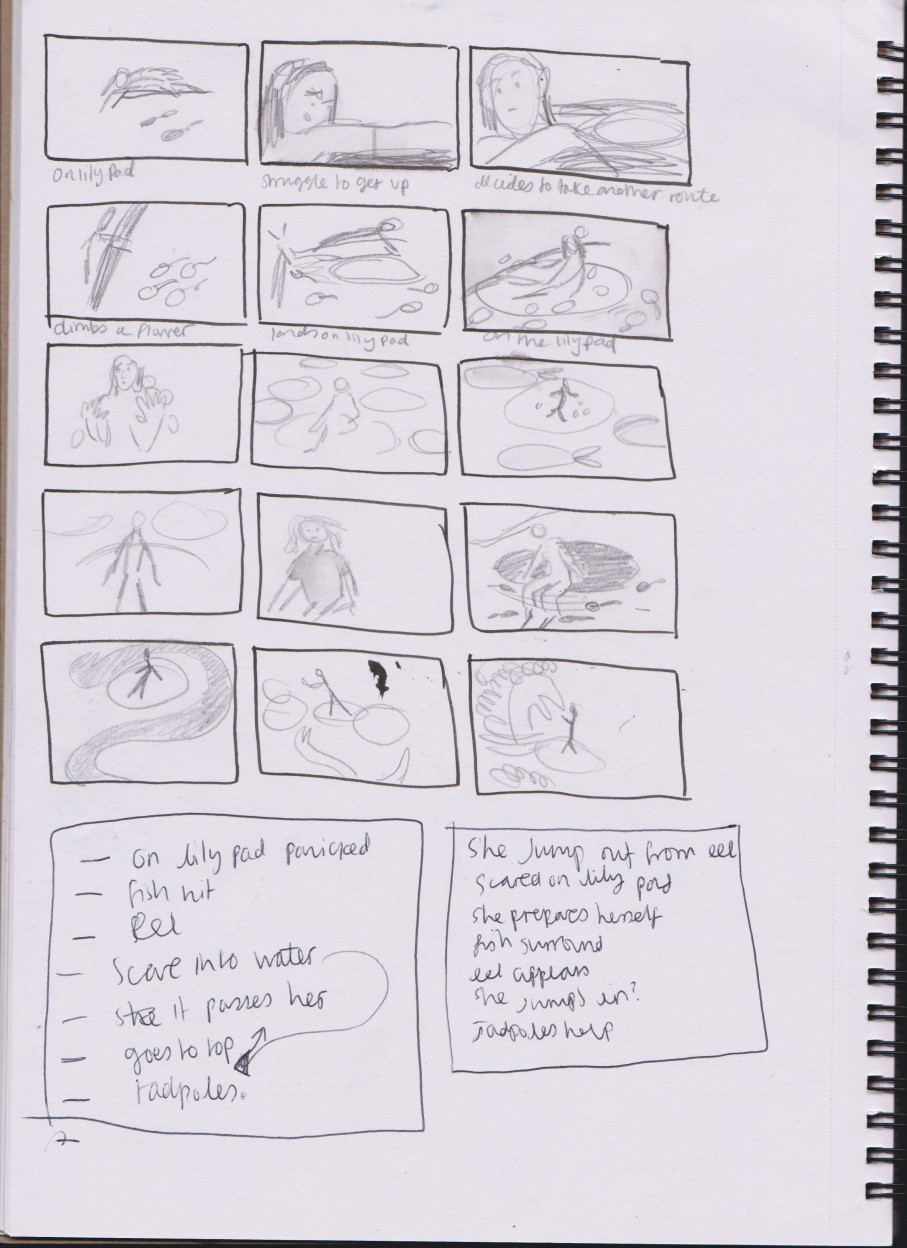
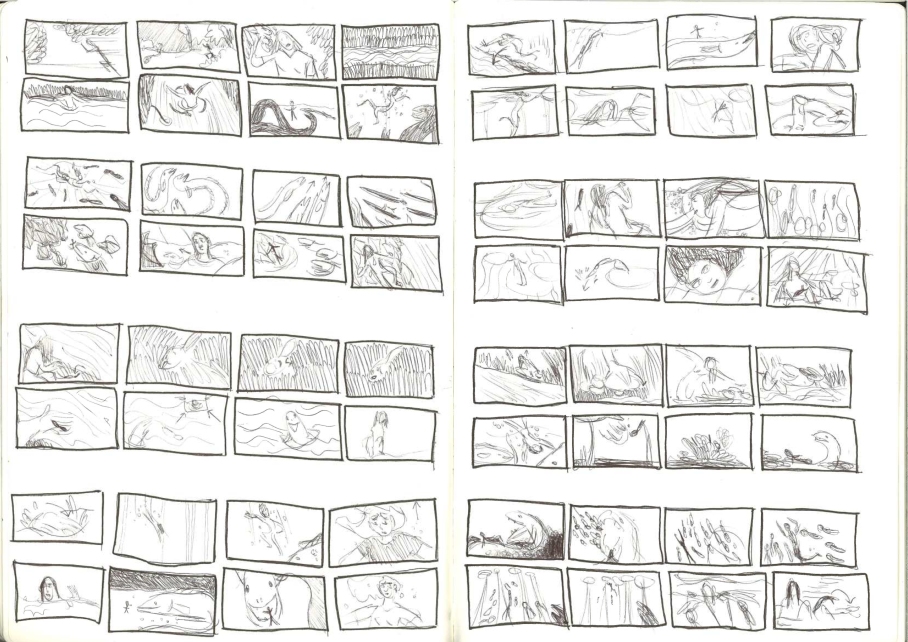
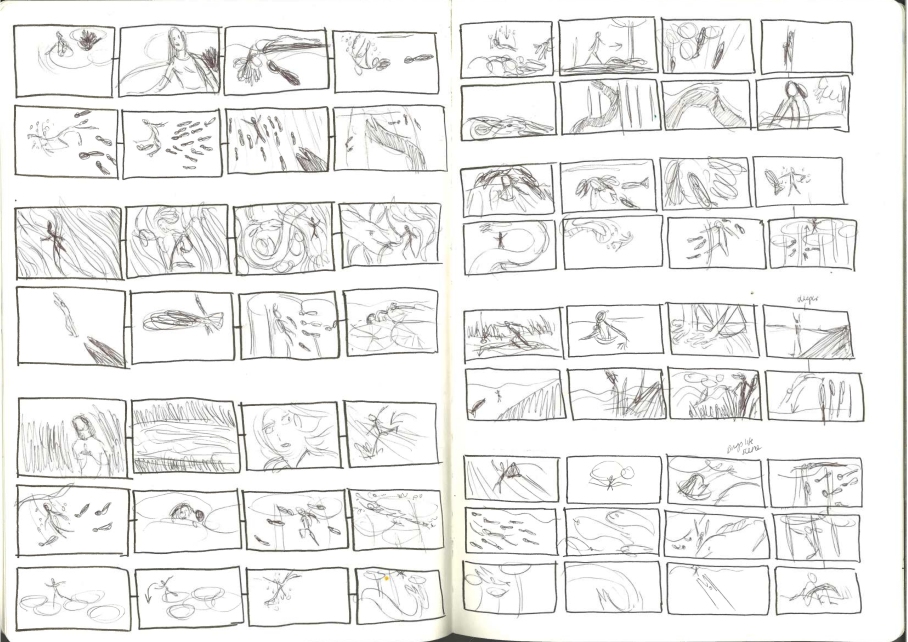


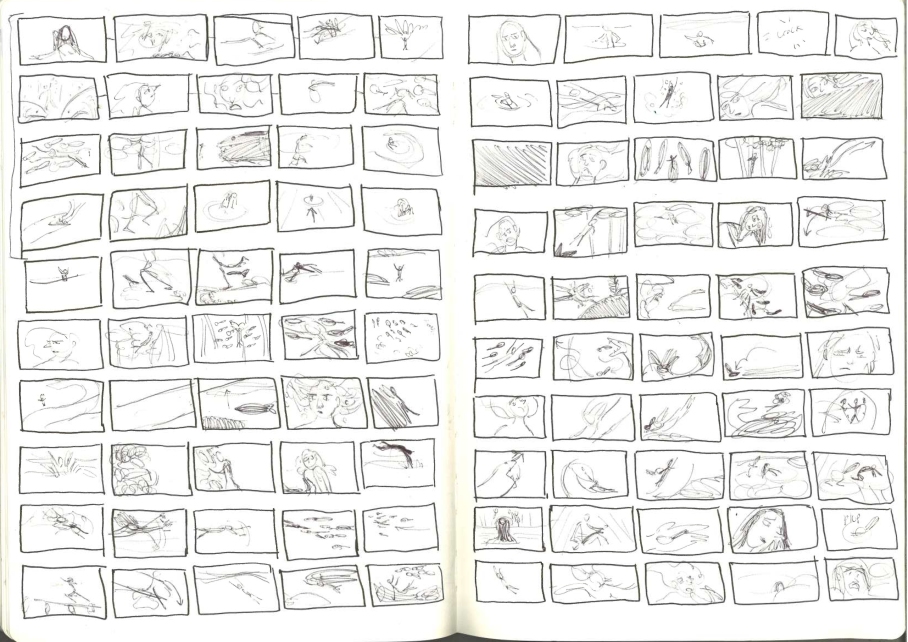
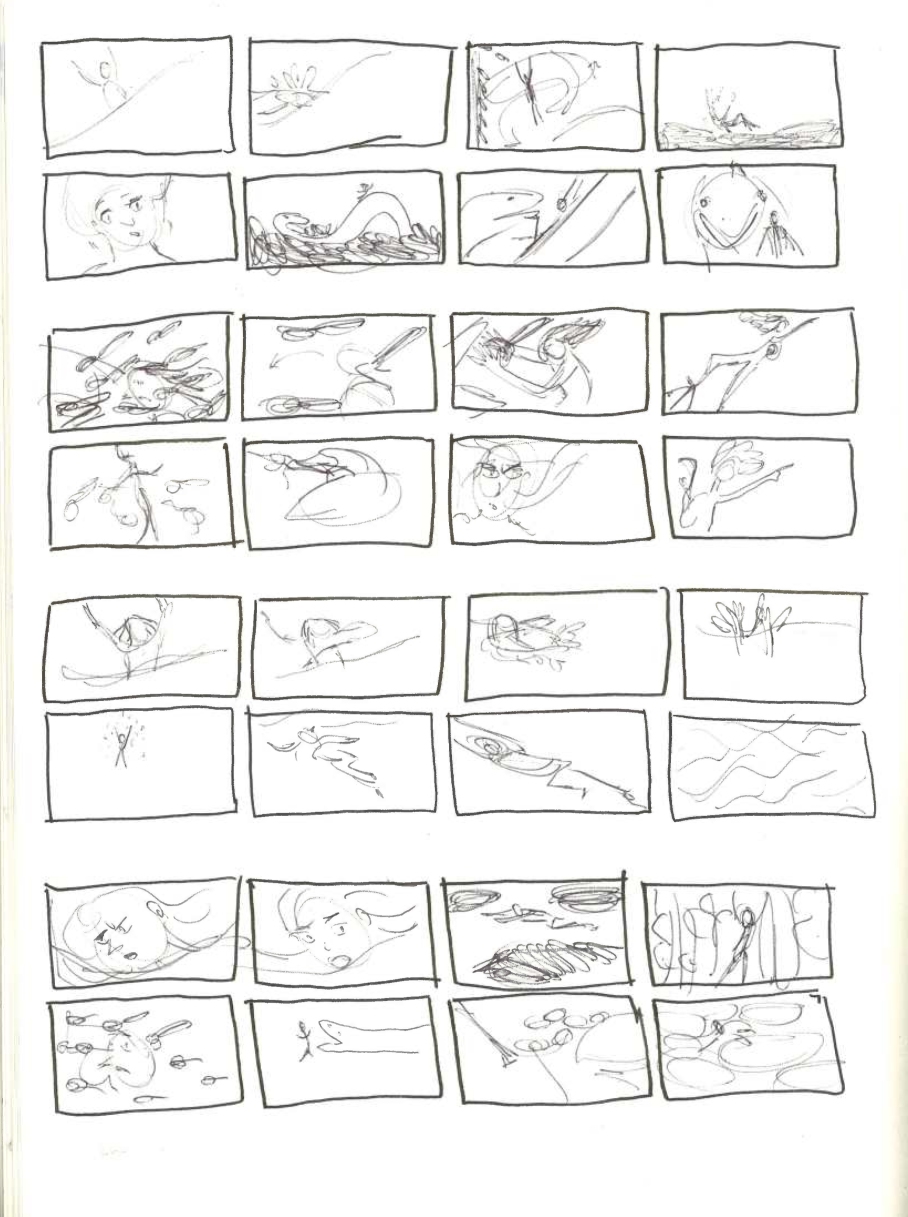


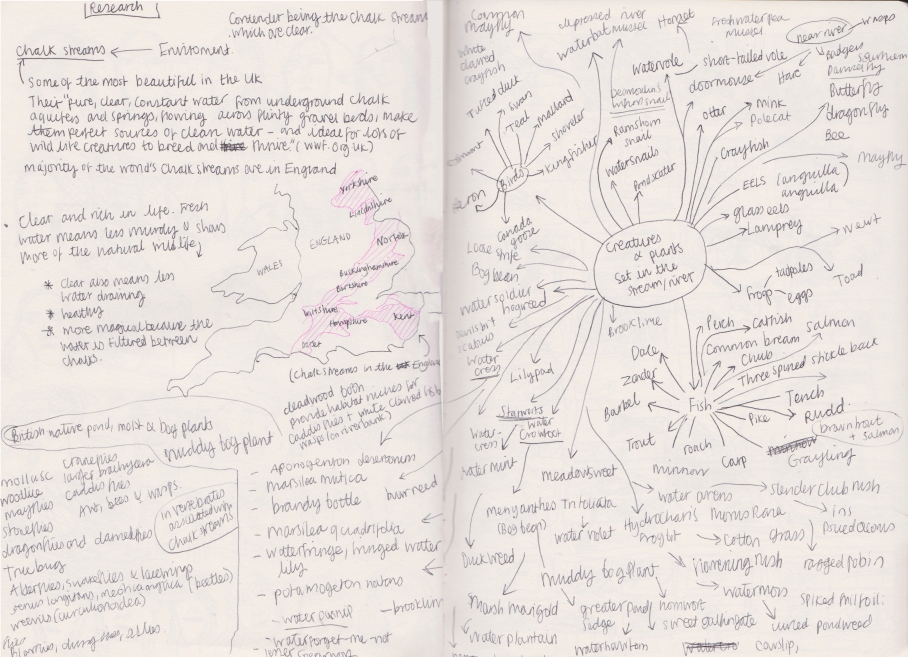 (L01:) I created this spider diagram above, of the different plants and wildlife that are found in the chalk streams. The most common species found around or in the water are the: Damselfly, desmoulin whorl snail, white-clawed crayfish, trout and for the plants: starwort, watercrowfoot, water cress and water parsnip. However, there are many, many more which live in the fresh clear waters. For me, I personally enjoyed learning and researching into the chalk streams, as it gave me inspiration and ideas for my narrative – and let me gain more knowledge on a new topic.
(L01:) I created this spider diagram above, of the different plants and wildlife that are found in the chalk streams. The most common species found around or in the water are the: Damselfly, desmoulin whorl snail, white-clawed crayfish, trout and for the plants: starwort, watercrowfoot, water cress and water parsnip. However, there are many, many more which live in the fresh clear waters. For me, I personally enjoyed learning and researching into the chalk streams, as it gave me inspiration and ideas for my narrative – and let me gain more knowledge on a new topic.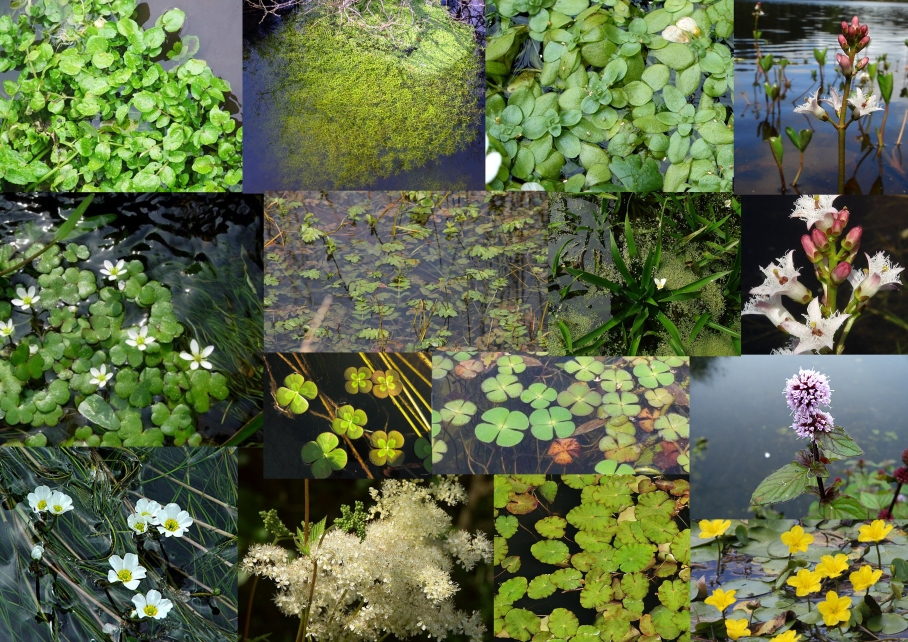 (LO1:) I created this moodboard to get a closer look at some of these aquatic plants that grow in or near chalk streams. The creation of this moodboard was helpful to look at plants I could include in my environmental designs. The range of different plants is incredible and shows the magic of the water (what I am trying to capture.)
(LO1:) I created this moodboard to get a closer look at some of these aquatic plants that grow in or near chalk streams. The creation of this moodboard was helpful to look at plants I could include in my environmental designs. The range of different plants is incredible and shows the magic of the water (what I am trying to capture.) (LO1:)I made this second moodboard to gather some images of the wildlife living in the chalk streams. It was a nice way to compare and explore the possible characters that I could include within my own animation. In addition, how each of these animals could possibly act. Are they kind, angry, optimistic, rude or shy? I’d like to think about all of these elements when if I pick any of these creatures in my work.
(LO1:)I made this second moodboard to gather some images of the wildlife living in the chalk streams. It was a nice way to compare and explore the possible characters that I could include within my own animation. In addition, how each of these animals could possibly act. Are they kind, angry, optimistic, rude or shy? I’d like to think about all of these elements when if I pick any of these creatures in my work.


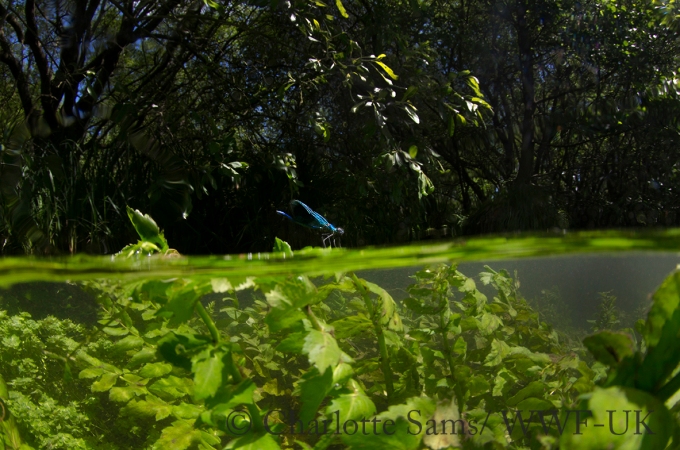







 (LO1:) Understanding how plants root is important for me to research, especially since I want my animation to be above and below the water, I will need to know what my character could encounter and what types of plants live where.
(LO1:) Understanding how plants root is important for me to research, especially since I want my animation to be above and below the water, I will need to know what my character could encounter and what types of plants live where.

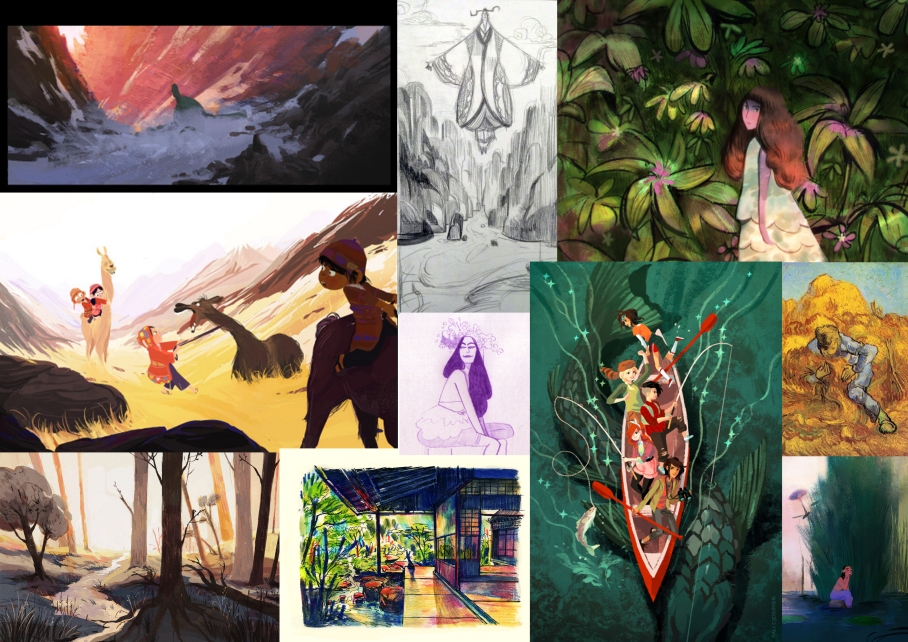







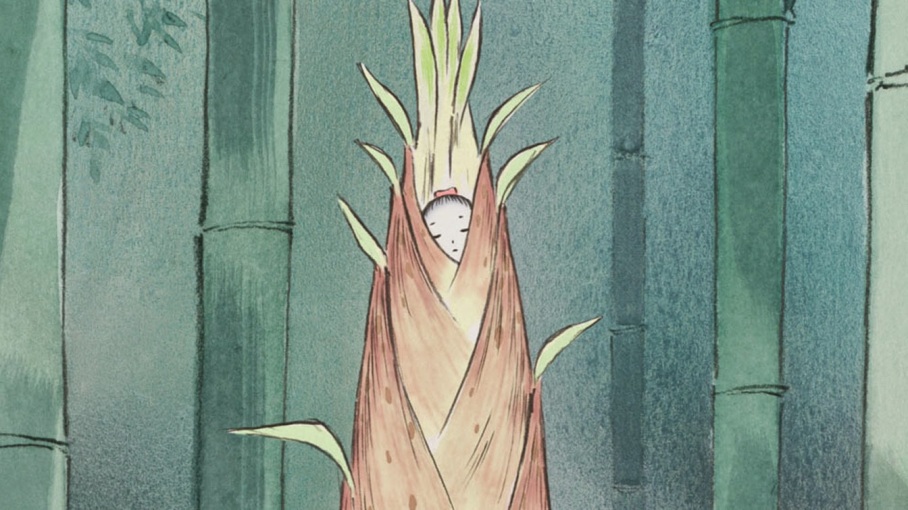









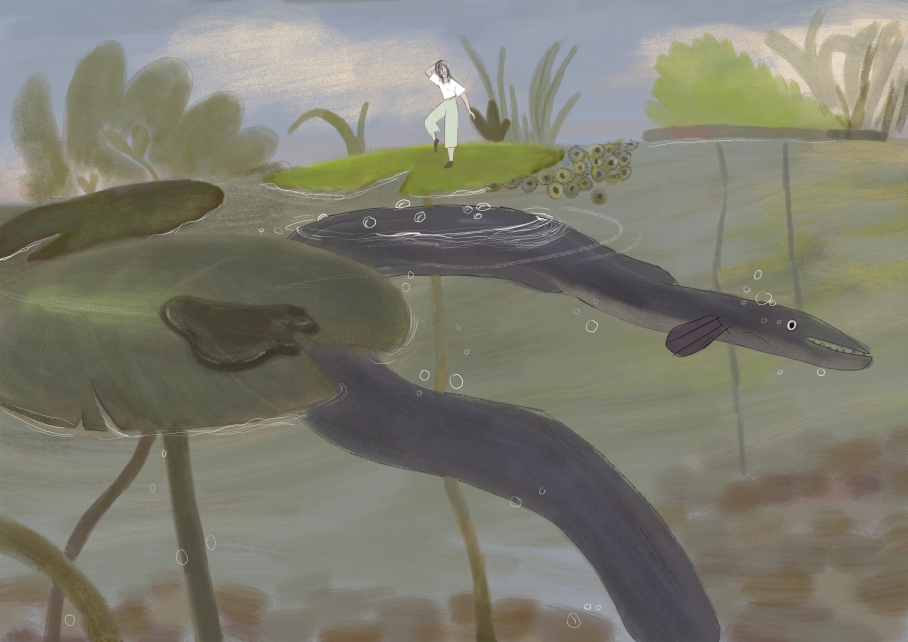
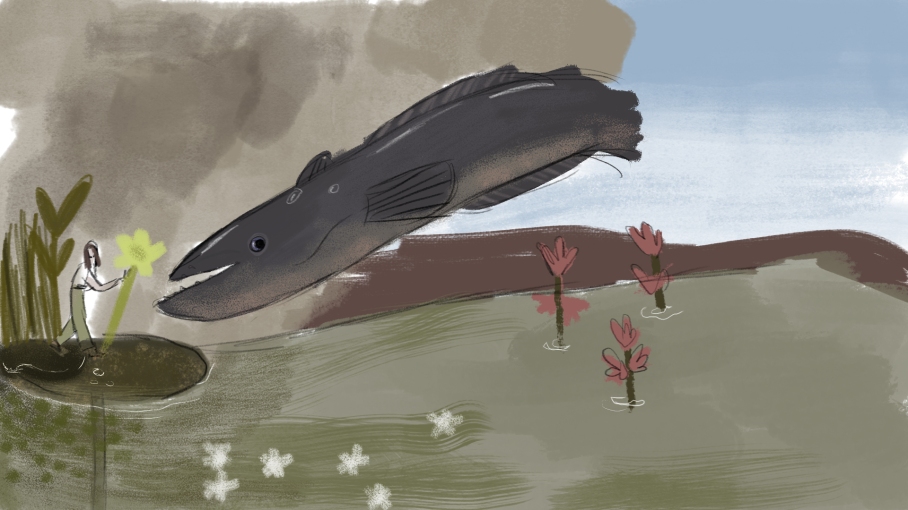







![warmup_01] warmup_01]](https://i0.wp.com/alicegearyyear3.wordpress.com/wp-content/uploads/2017/04/warmup_01.jpg?w=320&h=226&ssl=1)

